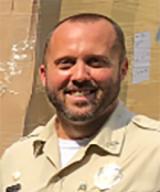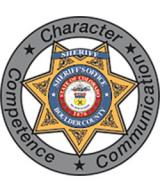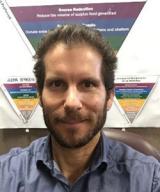On this page:
Description
Thursday, March 14, 2019, from 1:30 - 2:45 p.m. ET
The top tier of EPA’s Food Recovery Hierarchy is source reduction: reduce the volume of surplus food generated. Businesses and organizations can learn to effectively prevent wasted food by taking source reduction steps such as inventorying supplies, changing meal prep and buying less. Preventing wasted food provides the greatest potential for cost savings and resource conservation relative to the other Food Recovery Hierarchy activities. Because source reduction can be challenging to understand, quantify and implement, in this webinar (the third in a series) speakers described the definition of source reduction, and examples of award-winning cases at a restaurant, state park and county correctional facility that prevent wasted food at the source. View the first part and second part of the series.
![]() Video: Preventing Food Waste Upstream - a Source Reduction Approach Part III Exit
Video: Preventing Food Waste Upstream - a Source Reduction Approach Part III Exit
Speakers
Kelsey Davis, Tennessee Department of Environment and Conservation (Food Recovery Challenge Endorser awardee)
Kelsey is an Environmental Scientist with the Office of Policy and Sustainable Practices, where her primary focus is co-managing the Go Green With Us program in Tennessee State Parks. She holds a Bachelor of Science in Business Economics from the University of Memphis and a Master's in Sustainability from David Lipscomb University. She also holds her LEED Green Associate credential.
Scott Ferguson, The Forge at Montgomery Bell State Park (Food Recovery Challenge awardee in Source Reduction)
Scott has served as a Park Ranger with Tennessee State Parks since 2005. He holds a Bachelor of Arts from Lincoln Memorial University and graduated from the Tennessee Law Enforcement Training Academy in 2006.
J. Cody Lillstrom, Boulder County Resource Conservation Division Boulder County Jail (Food Recovery Challenge regional awardee)
J. Cody is the Zero Waste Program Manager for Boulder County’s Resource Conservation Department, where he has served since 2016. He was an AmericaCorps*VISTA Member, Leader and Program Manager in Montana. Cody earned a Master's in Environmental Policy from the University of Colorado in Denver.
Timothy Oliveira, Boulder County Jail and Boulder County Sheriff’s Office (Food Recovery Challenge regional awardee)
Timothy has been with Boulder County’s Sheriff’s Office for 18 years. He is the Support Services Commander at the Boulder County Jail, where he oversees the Food Services Unit and the Jail’s Alternative Sentencing Program, which includes oversight of the one-acre on-site garden.
André Villaseñor, U.S. Environmental Protection Agency – Region 9
André is the Sustainable Management of Food Coordinator in EPA’s Southern California Field Office. He began his career at EPA in 2005, following his service in the U.S. Peace Corps in Ecuador. He holds a Master in Science from the State University of New York and a Master of Arts from Syracuse University.
- Introductory Slides for March 14, 2019, Webinar (PDF)(4 pp, 735 K)
-
Preventing Food Waste Upstream - a Source Reduction Approach Part III (PDF)(17 pp, 2 MB)
Andre Villasenor's Presentation Slides
-
Source Reduction and other Food Recovery Challenge Efforts (PDF)(20 pp, 4 MB)
Kelsey Davis' Presentation Slides
-
The Forge at Montgomery Bell Source Reduction (PDF)(21 pp, 2 MB)
Scott Ferguson's Presentation Slides
-
Boulder County Source Reduction at the Boulder County Jail (PDF)(8 pp, 2 MB)
J. Cody Lillstrom and Timothy Oliveira's Presentation Slides





